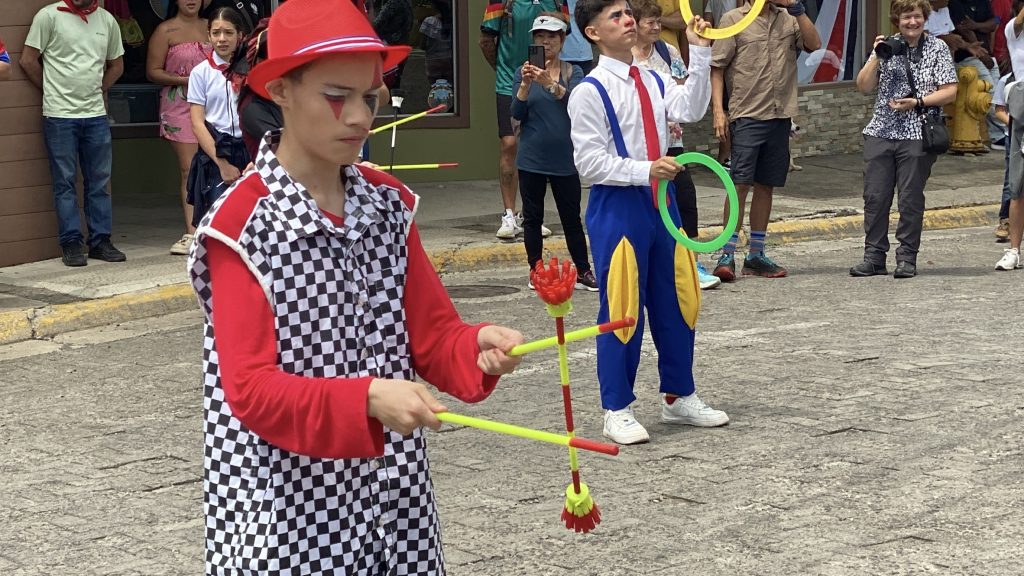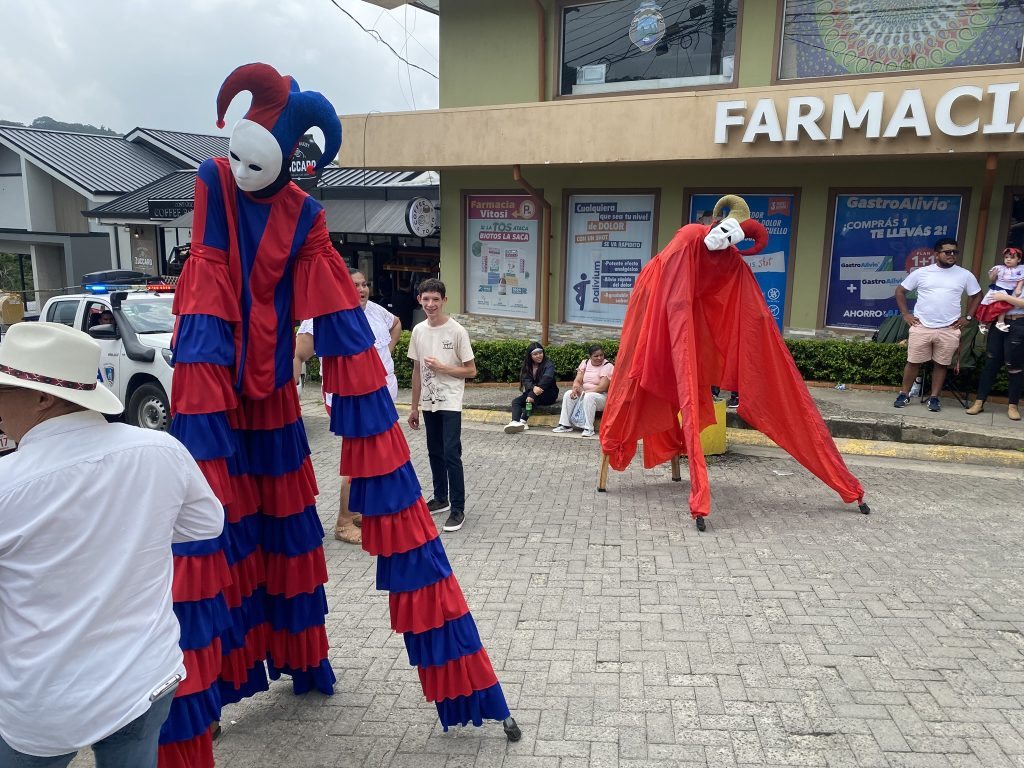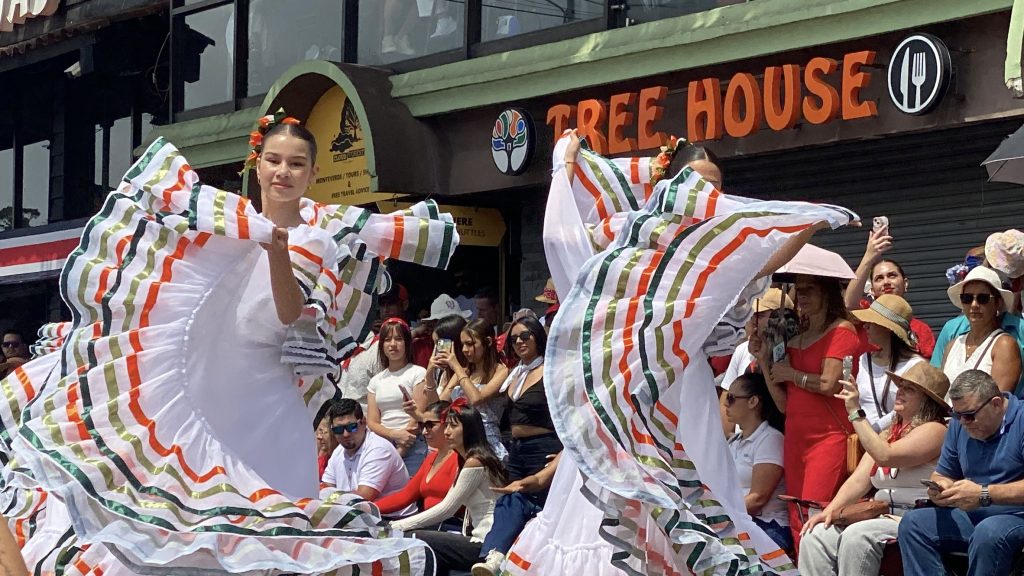

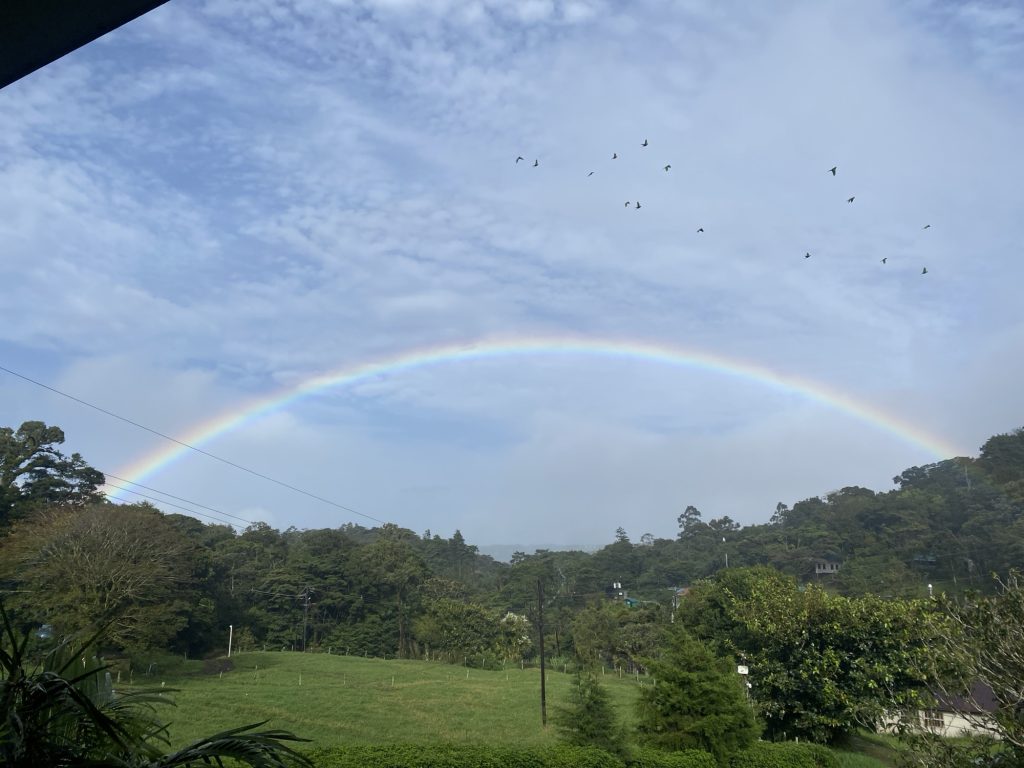

Of all the animals I have encountered in Costa Rica, I think the coati (or coatimundi) might be the most surprising. How did I go through my whole life without knowing of the existence of these guys? Well, in fact I haven’t… many moons ago I visited Iguazu Falls in South America and they are positively ubiquitous there. But I had forgotten about them until I came back here. And in any case, the one here, which is called a pizote in Spanish, is a different species from the one in Brazil. “Our” species is the White-nosed coati. See? Their noses are white.
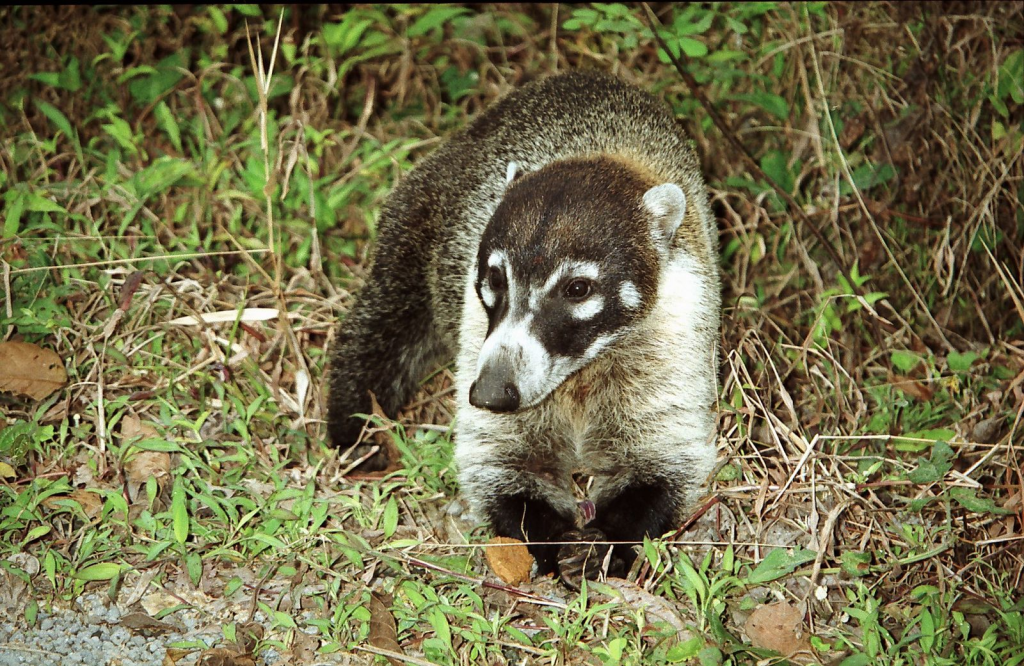
They’re everywhere in Monteverde. In the rainforest, you might see a group of 15 to 20 together, rooting around in the leaves. Lynnette and I went walking in Bajo del Tigre Reserve yesterday and happened upon a big troop on both sides of the trail. They were entirely uninterested in our presence. Here’s a bit of evidence of how uninterested they are in the two-legs (sorry, I’m no cinematographer, but I did take these videos myself…):
But they’re not exclusive to the forest. As a matter of fact, they’re a bit like raccoons in that they are perfectly willing to approach human habitats. As in, say, the habitat which is our deck. We made the mistake of leaving a big bunch of bananas on our deck when we left town for a few days and when we came back… let’s just say it was no longer a “bunch” of bananas.
I got some footage of one fellow who unfortunately had a bad leg:
Felt pretty bad for him. He’s definitely not the only one to have visited us, though.
Anyway, even though I see them around a lot, I don’t know much about them. So I figured I would look up some info, learn a bit, and write it up here. Lucky you! Behold! Coati Frequently Asked Questions!
The White-nosed coati lives from Mexico to the southern end of Panama. It is apparently not terribly interested in South America!
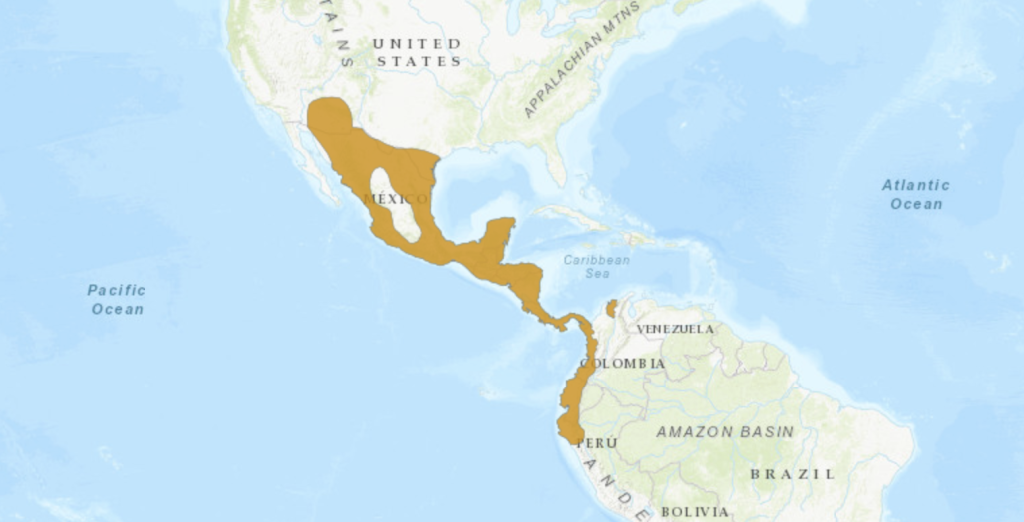
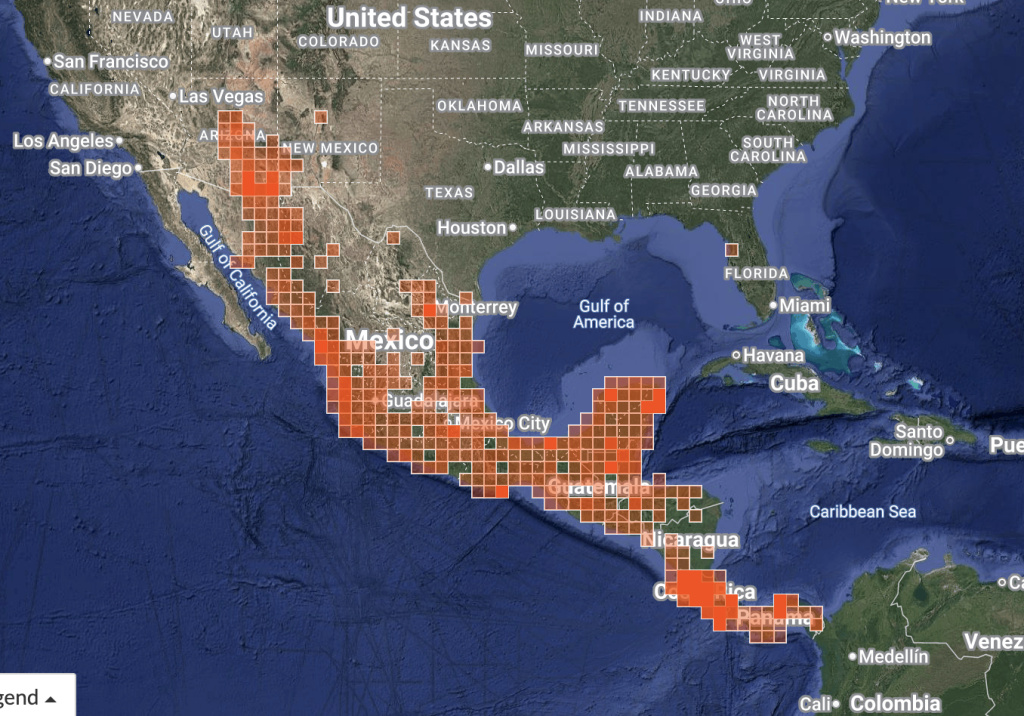
Wikipedia states that the White-nosed Coati can eat all kinds of stuff. “The white-nosed coati is an omnivore and forages mostly on the ground for small vertebrates, fruits, carrion, insects, snakes, and eggs.” In other words, anything it can get its grubby paws on. Including our bananas. And our compost.
They actually have a lot of predators, including big cats, snakes, and raptors:
Coati predators include jaguarundis, anacondas, pumas, maned wolves, boa constrictors, foxes, dogs, tayras, ocelots, and jaguars. Large raptors, such as ornate hawk-eagles, black-and-chestnut eagles, and harpy eagles, also are known to hunt them. White-headed capuchin monkeys hunt their pups. Wikipedia

This is actually a rather interesting topic: apparently until recently coatis were considered to be most closely related to raccoons, but genetic studies have caused this to be revised; they are now one step closer to nutty little guys called olingos.
Yes, yes they do.
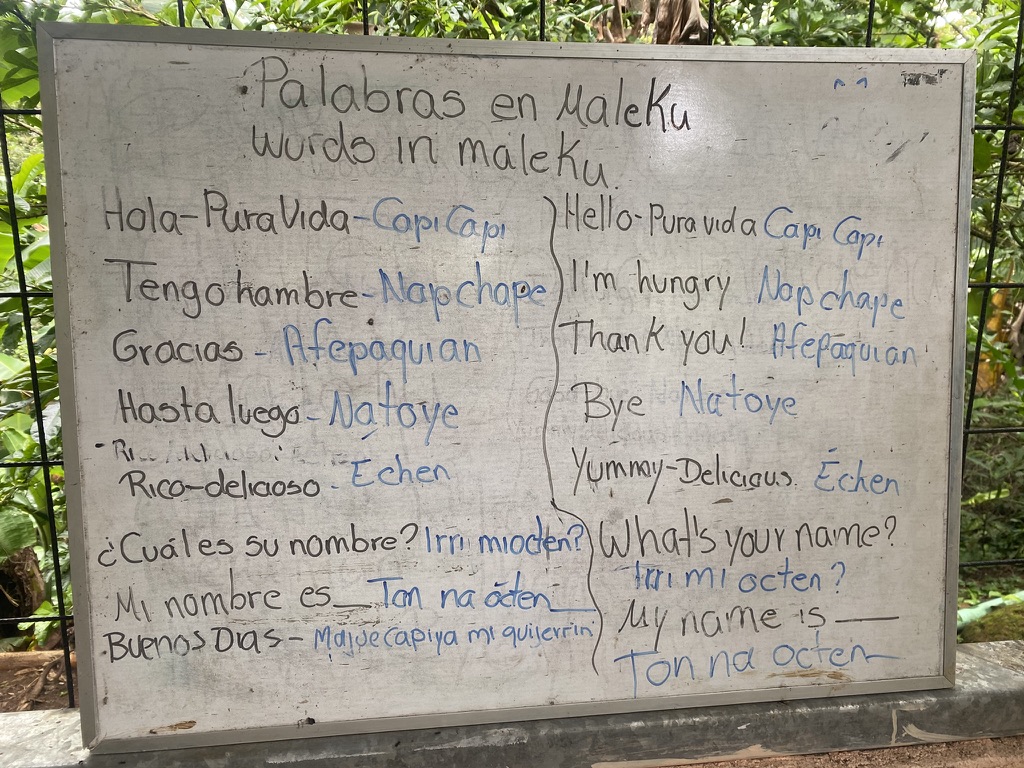
One of the highlights for me of our trip to the La Fortuna area over the last week was a visit to the Maléku people of northern Costa Rica.
Costa Rica has several rich indigenous cultures. The Maléku are the northernmost indigenous people in the country, and while the smallest group, numerically speaking, they have managed to protect their language and culture to an amazing degree.
In this post I would like to share with you a bit of background about the Maléku language and its larger linguistic context.
Human languages can be understood metaphorically as being like human families: they descend from common ancestors. So for instance, Spanish, Italian, and French are all modern “descendants” of spoken Latin. Little dialectal changes piled up over the years as Latin speakers spread out, and eventually people at the margins of the expansion could no longer understand each other easily. At that point what were once dialects became distinct but related languages.
Here’s a map which gives an approximate idea of the distribution of the world’s language families as they stand today. Estimates vary, but there are certainly at least a few hundred distinct families (comprising perhaps seven thousand individual languages):
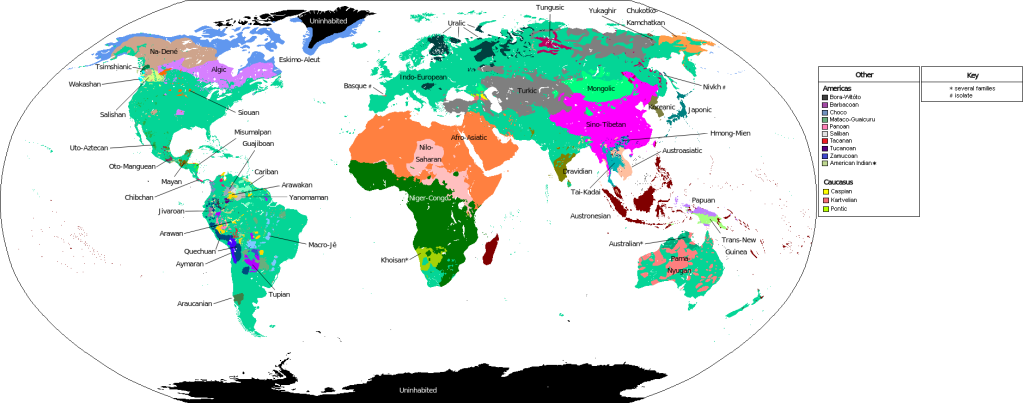
Maléku is a member of an interesting family called Chibchan. There are many Chibchan languages spread across central and South America. Today, Chibchan languages are or were spoken in Honduras, Nicaragua, Costa Rica, Panama, Colombia, and Venezuela. Maléku is listed in the map below by another name, Guatuso, which is still sometimes encountered. Rama and Pech are the only Chibchan languages spoken further north than Maléku. It is believed that the Chibchan languages originated in South America and moved north.
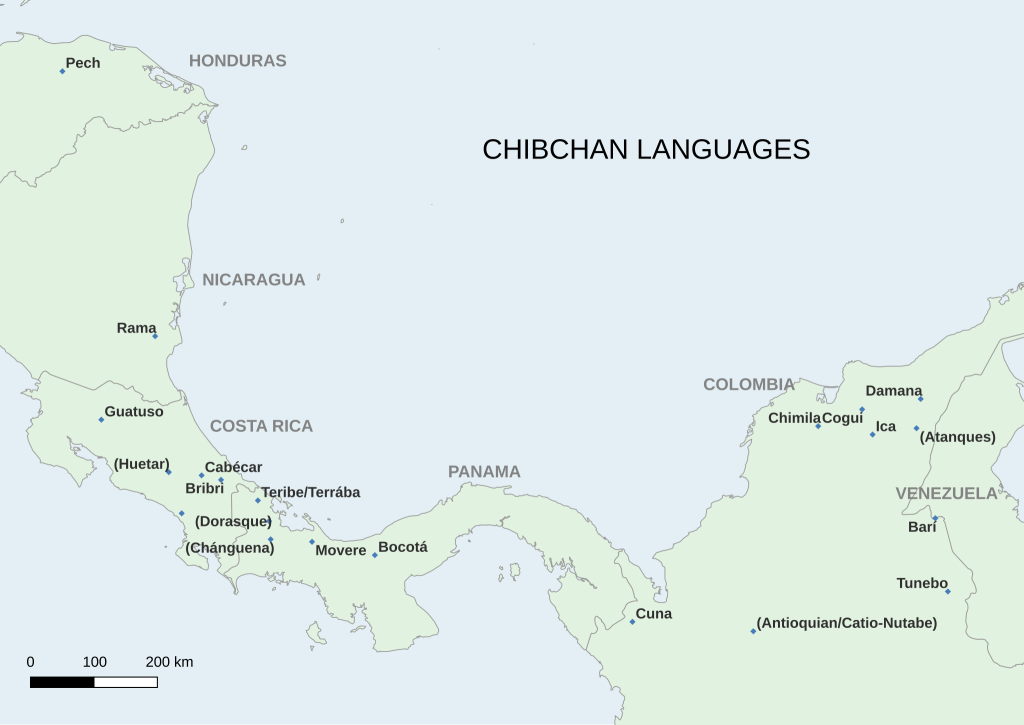
There are three Maléku towns today, Tonjibe, Margarita, and El Sol. We passed briefly through Margarita on our way in to Tonjibe, but we did not visit El Sol.

In fact, the Maléku cultural area is much bigger than just these small towns; in an unfortunately familiar story, much of their land has fallen into non-Maléku hands via sometimes shady dealings. Their stories detail a much larger area, including the Arenal volcano and the area around what is now La Fortuna, as well as the Río Negro river basin area. You can read a brief account by the Maléku of their territory and attempts to regain and reforest it here.
Even our brief visit was sufficient to see that the language is still spoken, even though most people there also speak Spanish (and some speak some English).


| Español | English | Maleku |
|---|---|---|
| Hola / Pura vida | Hello / Pura vida | Capi Capi |
| Tengo hambre | I’m hungry | Napchape |
| Gracias | Thank you | Afepaquian |
| Hasta luego | Bye | Natoye |
| Rico / delicioso | Yummy / Delicious | Échen |
| ¿Cuál es su nombre? | What’s your name? | Irri mi octen? |
| Mi nombre es ___ | My name is ___ | Ton na octen ___ |
| Buenos días | Good morning | Majuecapiya mi quijerrin |
The language has been well documented compared to other Chibchan languages. The linguist Adolfo Constenla Umaña specialized in Chibchan languages of Costa Rica, and Maléku in particular, for decades. His work at the University of Costa Rica (UCR) has continued in the wake of his unfortunate death in 2013 — extensive resources on the language have been published online as part of the Dipalicori Project at UCR. There are a whole range of contents there, from illustrated plant dictionaries…
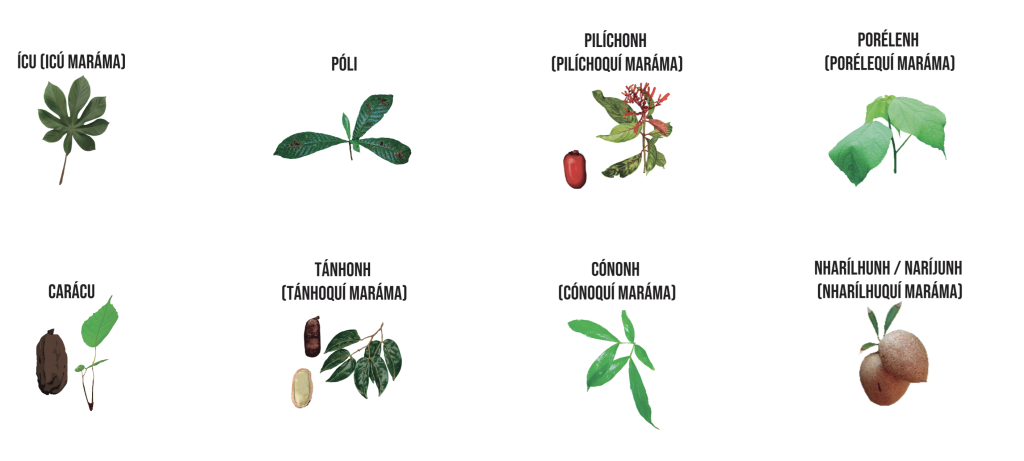
…to diagrams of how traditional Maléku houses are made:
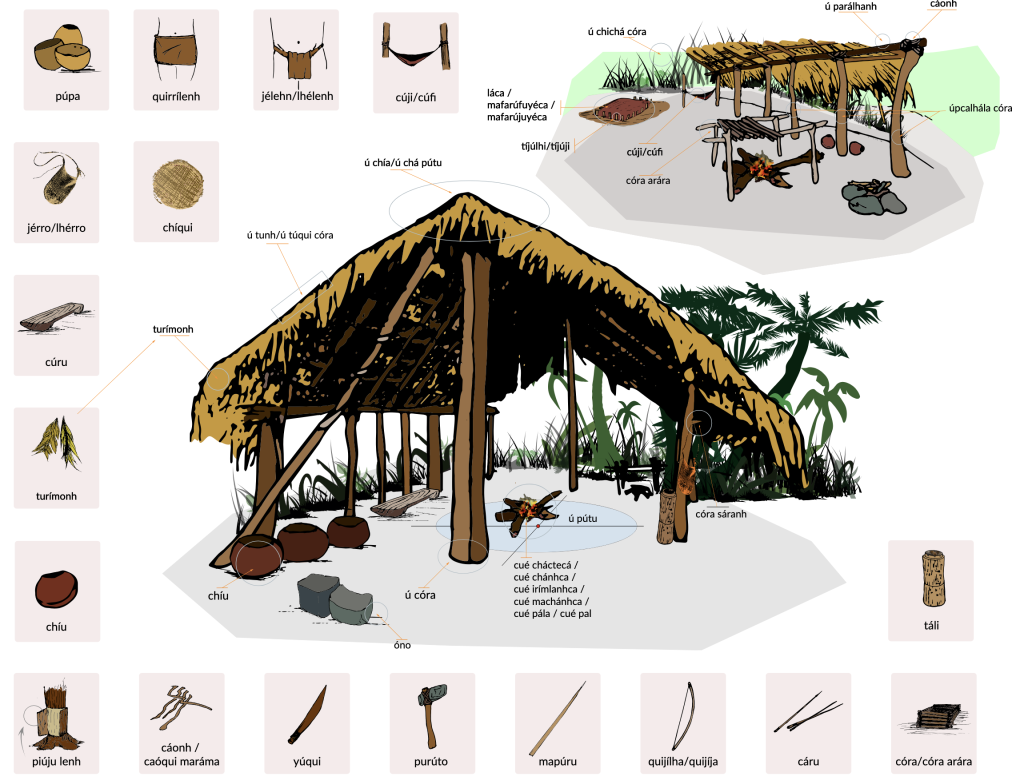
…to graphic novels about some of the darker periods of Maléku history.
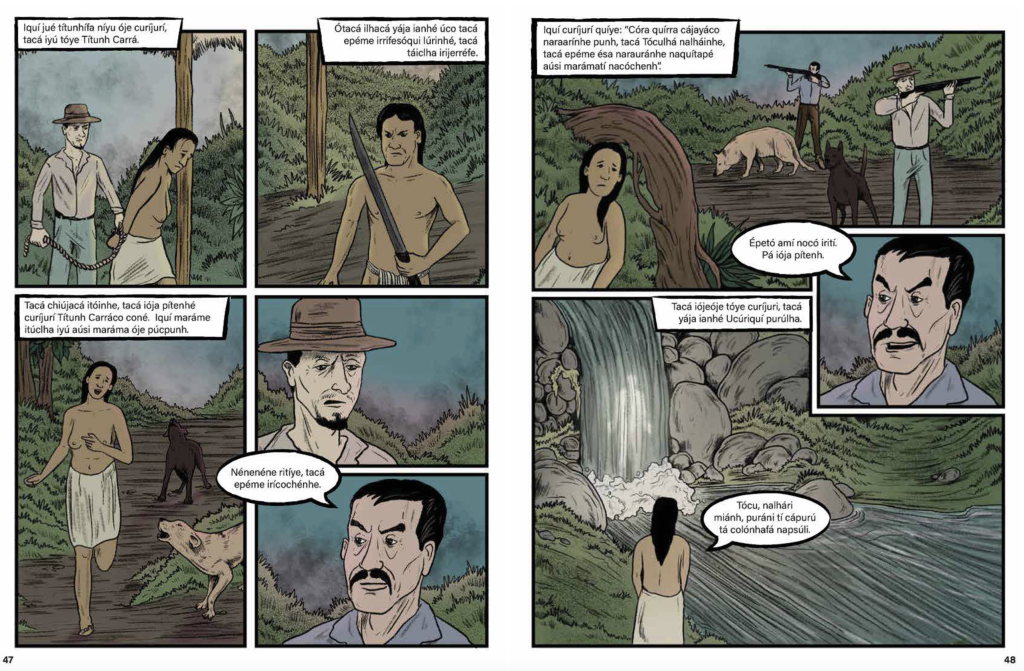
If you are in the area and would like to meet the Maléku you can check out their web page here:

They’re also on Facebook, and you can reach them on WhatsApp at +506 8890 6509.
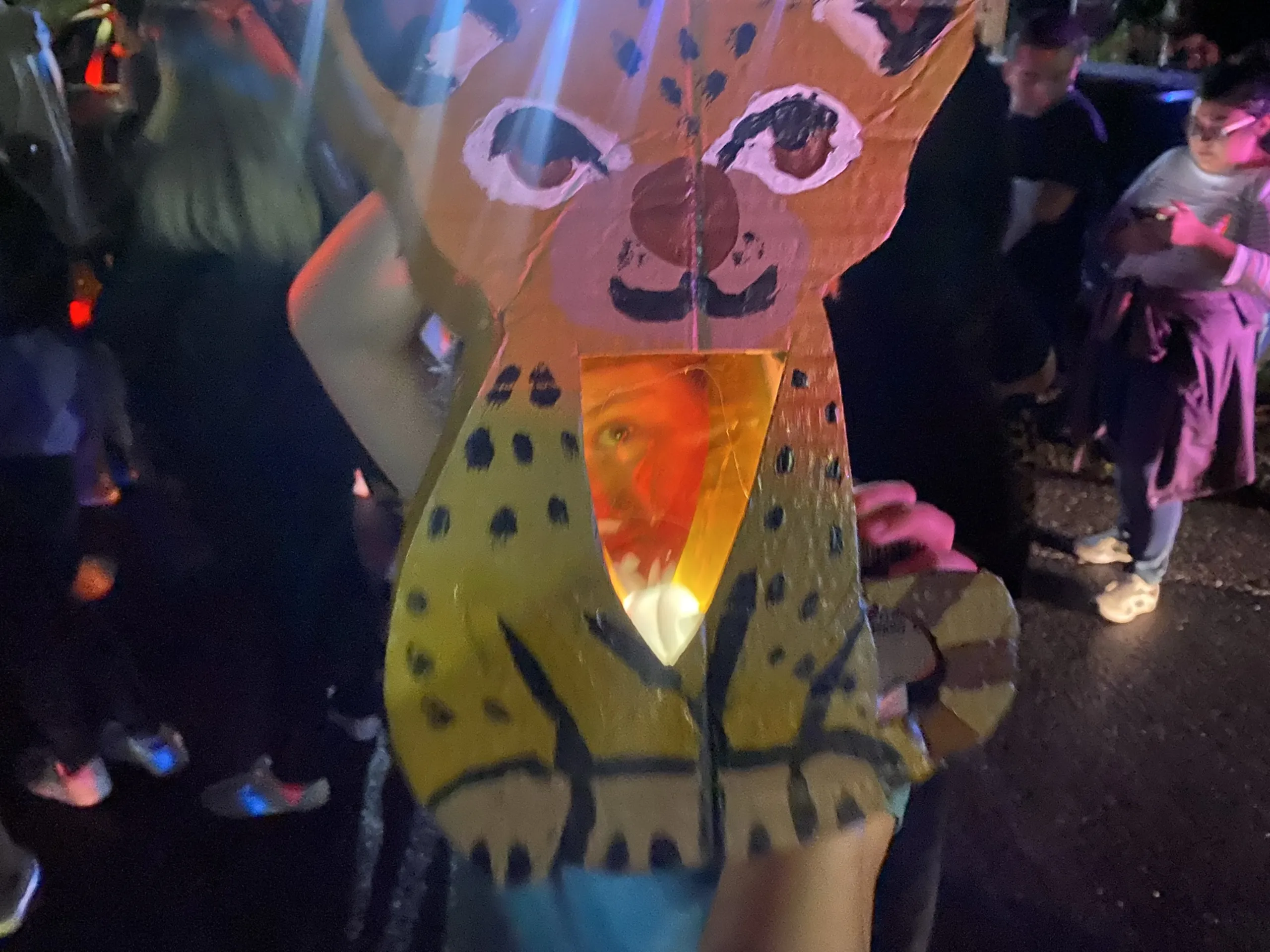
I thought I would share some pictures and thoughts about our recent experience of Independence Day or Día de la Independencia here in Monteverde.
As it is in much of Latin America, Independence Day is celebrated on the 15th of September. Interestingly, that date is actually the date of independence of all of Central America from Spain in 1821. This includes Costa Rica, El Salvador, Guatemala, Honduras, and Nicaragua (not Panama, which was part of Colombia until 1903).
In the early 19th century, Spain had been having plenty of trouble with political stability in its own right — various uprisings and eventually Napoleon’s older brother Joseph being placed on the Spanish throne in 1808. So various regions in Central (and South) America issued its declaration of independence: (Acta de Independencia Centroamericana).
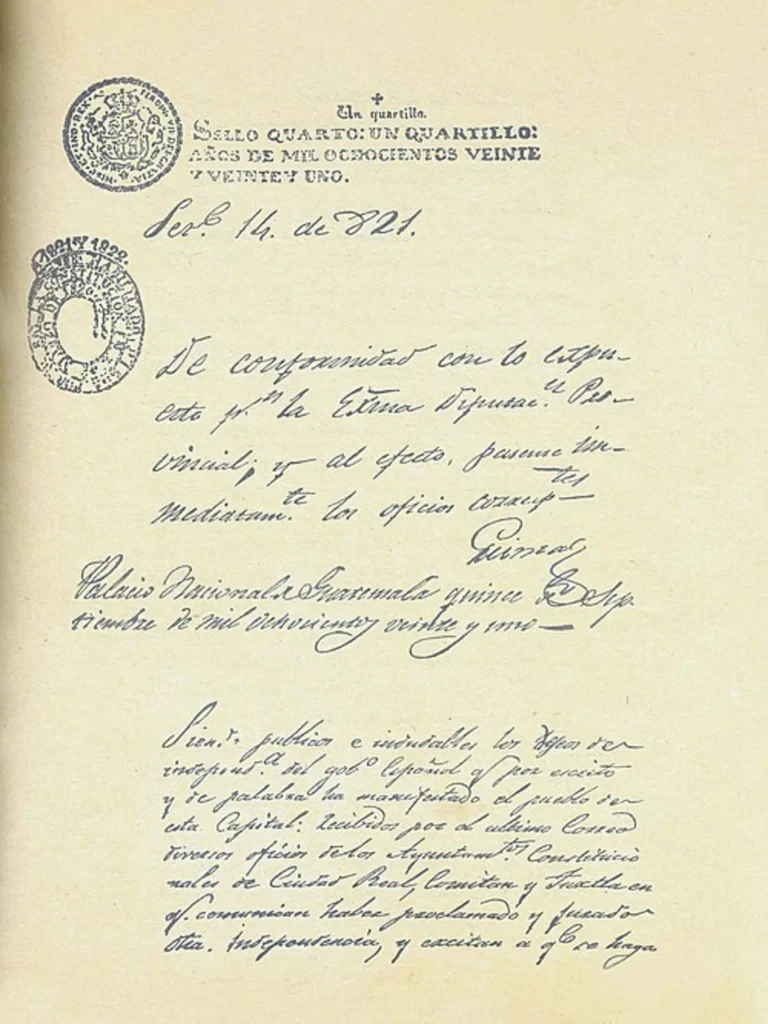
At the time, Guatemala was the most powerful of the Central American provinces, and the plan was to form a Central American Federation, rather along the model of the United States (so each of what is now Guatemala, El Salvador, Honduras, Nicaragua, and Costa Rica would have been states in the federation). A long story ensued, but eventually the various countries went their separate ways. Costa Rica was the last to formally declare independence, on October 29, 1821.
Nonetheless, September 15th remains the date that is commemorated throughout Central America as Independence Day.
Independence Day celebrations in Monteverde actually start the evening of September 14th, with a parade of school children carrying lanterns (faroles in Spanish) through Santa Elena. The lanterns are handmade and made from recycled materials.
Preparations begin long before the 14th (we often heard drummers banging away as the practiced around town). At the local high school gym, there was an activity put together for kids to make their own faroles. Traditionally the faroles depicted a fairly small set of national symbols: horses, ox carts, and various animals. I really enjoyed seeing how creative people got with their faroles, I wish I had taken more pictures of them! But here are a few to give you an idea.
Our daughter made this very nifty ocelot:
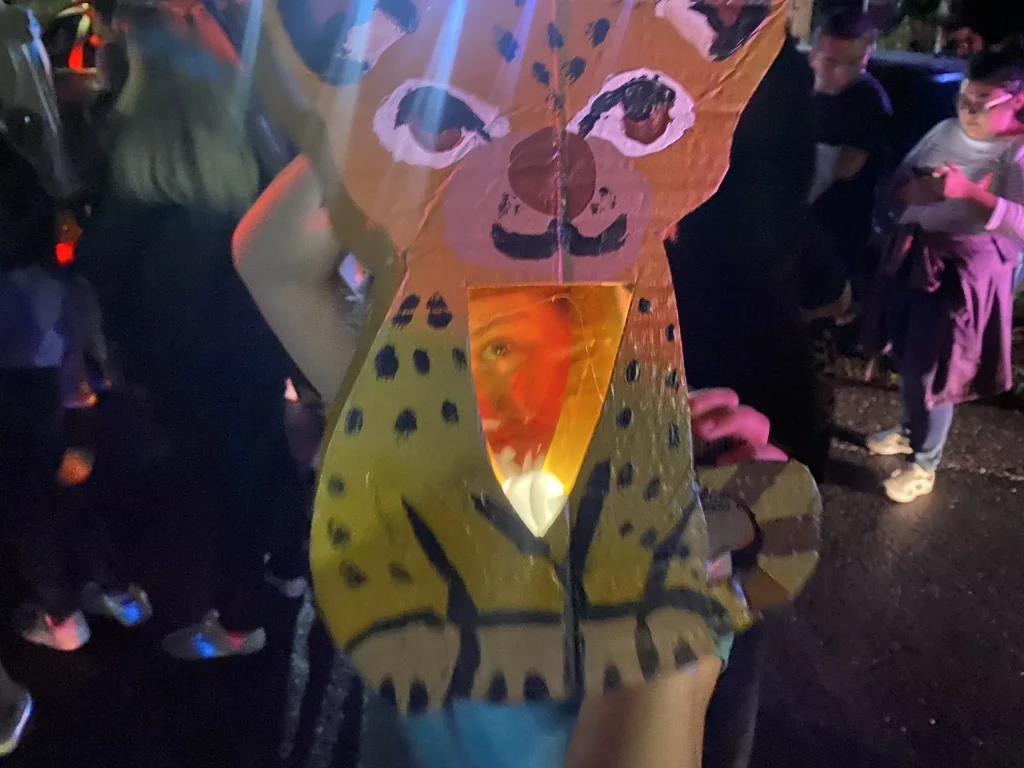
Some of the faroles we saw were rather amazing. For instance this rather astonishing bus with a functioning front door and luggage compartment!:

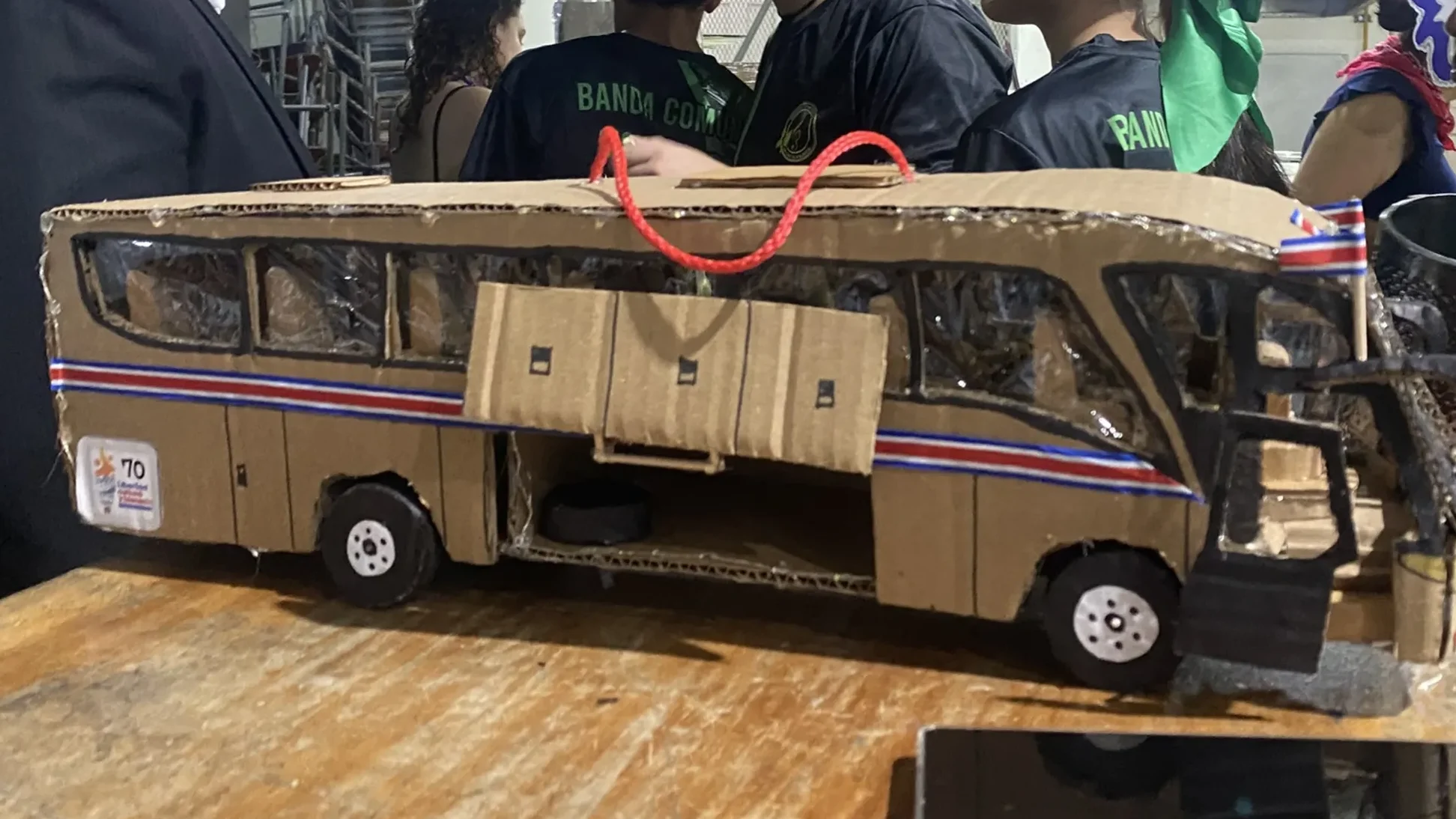
Here is a cool scene of two marimba players. (The marimba is the national instrument of Costa Rica, and is popular throughout Central America.)
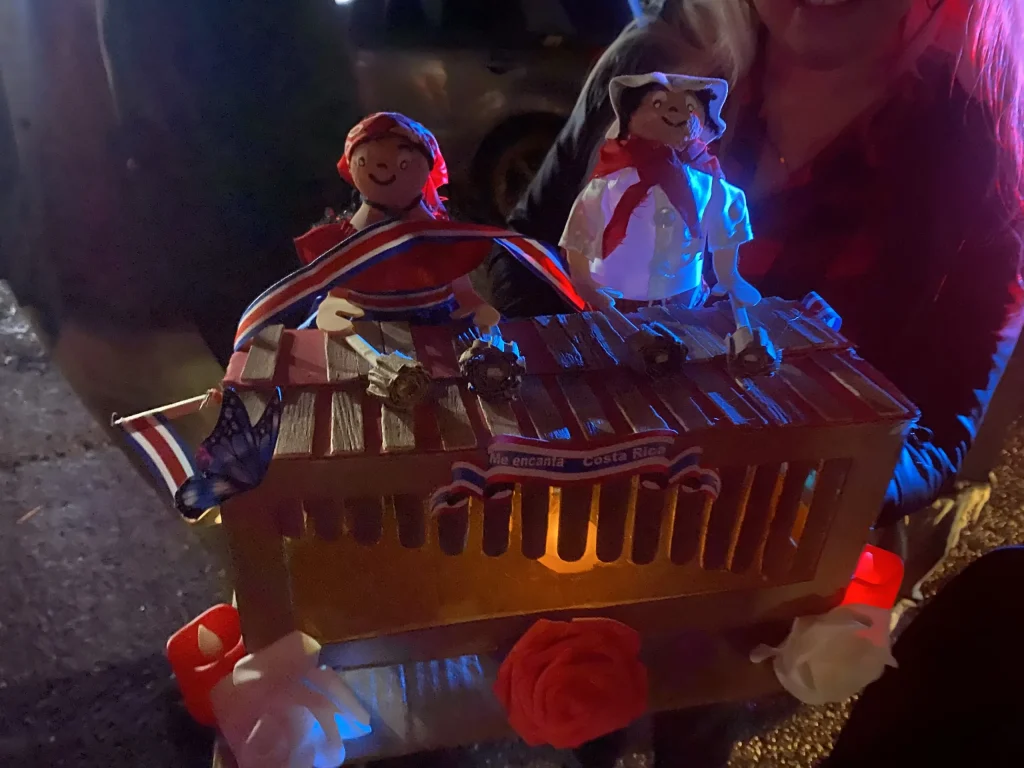
The parade wove around town and ended up back at the highschool, where various dance groups performed. Here are some pictures of the dancers:
The next morning we got up early did headed back into Sta Elena for Independence Day proper! These people take Independence Day seriously, folks.
The parade was early in the day (in an attempt to beat the heat and/or rain). We got lucky as the weather was very nice. The parade takes quite a while, as every school in the area comes through, and most of them perform a musical number with more dancing!

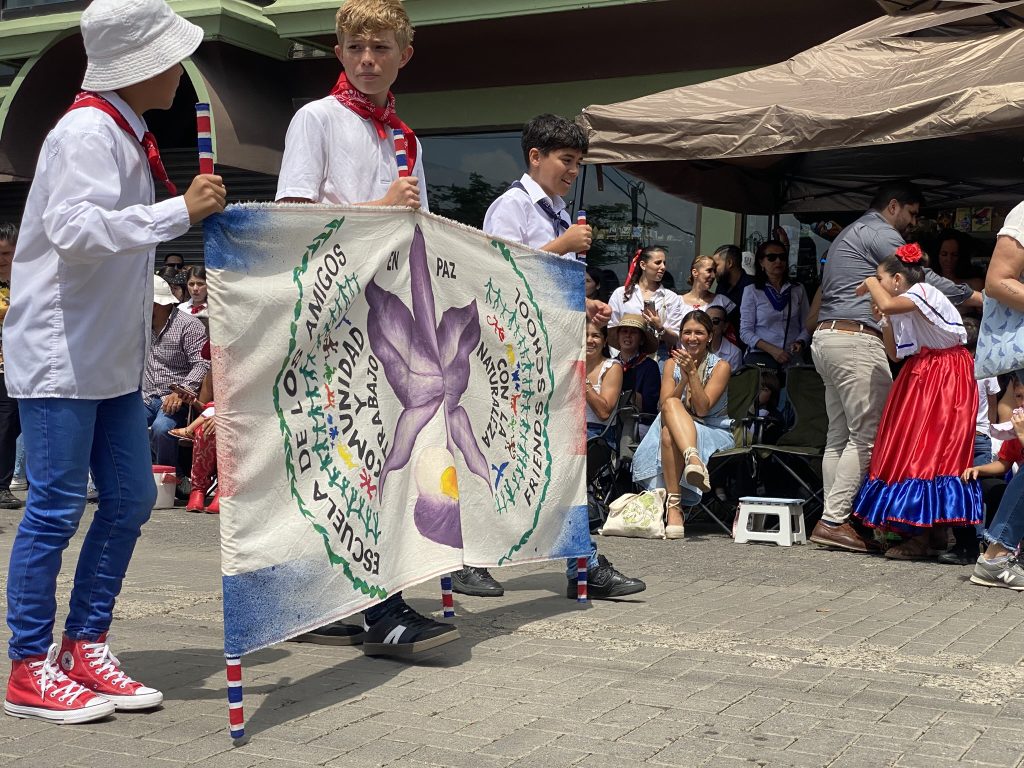
And last but not least came the Monteverde Circus, who did some very impressive juggling, stiltwalking, and unicycling.
